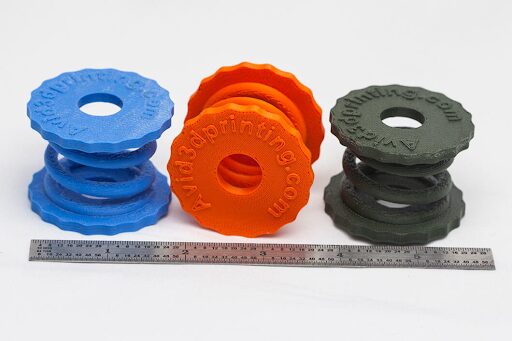In the realm of 3D printing, fused deposition modeling (FDM) has emerged as a revolutionary technology that brings imagination to life with precision and efficiency. FDM offers a cost-effective and accessible approach to creating three-dimensional objects by extruding thermoplastic materials layer by layer. In this article, we explore the captivating world of fused deposition modeling, delving into its process, applications, and the limitless creative possibilities it presents for designers and manufacturers.
Understanding fused deposition modeling (FDM)
Fused deposition modeling, also known as fused filament fabrication (FFF), is a 3D printing technique that builds objects layer by layer using a thermoplastic filament. The process begins with a digital model created using computer-aided design (CAD) software. The 3D printer then heats the filament, melting it into a semi-liquid state. The printer’s nozzle extrudes the molten material onto a build platform, gradually building the object from the bottom up. As the layers cool and solidify, they fuse together, creating a solid and durable final product.
Versatile applications of fused deposition modeling
Fused deposition modeling finds applications across various industries. In product design and development, FDM enables rapid prototyping, allowing designers to quickly iterate and refine their designs before moving into production. Architects utilize FDM to create scale models and architectural prototypes, helping visualize and refine their designs. Engineers employ FDM to produce functional prototypes and end-use parts with complex geometries. Additionally, FDM is utilized in the production of customized consumer products, and educational tools, and even in the medical field for creating prosthetics and surgical models.
Advantages of fused deposition modeling
Fused deposition modeling offers several advantages that contribute to its popularity. Firstly, it is a cost-effective 3D printing method, as thermoplastic filaments are readily available and affordable compared to other printing materials. FDM printers are also widely accessible, making it easier for individuals and businesses to adopt the technology. FDM allows for the use of various materials, including ABS, PLA, and PETG, offering versatility and enabling the production of objects with different mechanical properties. Additionally, FDM is known for its high accuracy and excellent layer adhesion, resulting in sturdy and reliable prints.
Design freedom and customization
One of the key benefits of fused deposition modeling is the freedom it provides for design and customization. FDM allows designers to bring their intricate and complex designs to life with ease. The layer-by-layer construction enables the creation of intricate details, undercuts, and internal structures that would be challenging to achieve with traditional manufacturing methods. With FDM, designers have the flexibility to experiment, iterate, and customize their designs to meet specific requirements or cater to individual preferences.
Pushing the boundaries of creativity
Fused deposition modeling empowers designers and manufacturers to push the boundaries of creativity. The accessibility and affordability of FDM make it an ideal tool for maker spaces, educational institutions, and small businesses. It democratizes the production process, allowing individuals to turn their ideas into physical objects. The constant advancements in FDM technology, such as improved printing speeds and material options, continue to expand the creative possibilities and open new avenues for innovation and design exploration.
Redefining 3D printing possibilities with fused deposition modeling
Fused deposition modeling has transformed the world of 3D printing, enabling designers and manufacturers to bring their visions to life with remarkable precision and versatility. With its accessibility, cost-effectiveness, and design freedom, FDM has become a go-to technique for rapid prototyping, functional testing, and customized production. As technology continues to advance, fused deposition modeling will undoubtedly play a vital role in fueling innovation, empowering creativity, and redefining the possibilities of 3D printing.

